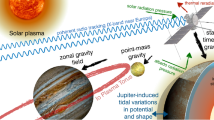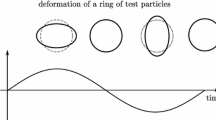Abstract
Is there a business, service and technology case for flying constellations lower? This study describes work by Thales Alenia Space UK and Thales Alenia Space France and the Satellite Applications Catapult to select an attractive telecommunications application for Very Low Earth Orbit (VLEO) satellites. Through a trade process comparing 8 different applications, mobile 5G internet access was selected as a financially compelling prospect for a VLEO constellation. This work develops a conceptual design of the payload and platform for the satellites in the constellation. A constellation was selected which will provide coverage between latitudes of ± 55° (as these latitudes cover > 95% of the Earth’s population). This consists of 33 planes of 70 satellites each inclined at 55° which will cover many potential users, with extended service in northern highly populated areas. The constellation will be able to provide an average 3.8 Mbps downlink data rate per beam to a conventional mobile phone handset, with each satellite supporting 320 beams. The flexibility of the payload allows this rate to be increased if not all beams are in use.







Similar content being viewed by others
Availability of data and materials
Not applicable.
Code availability
Not applicable.
References
Bacon, A., Olivier, B.: “Skimsats: bringing down the cost of Earth Observation,” in Proceedings of the 12th Reinventing Space Conference, 2017, pp. 1–7.
Gavish, B., Kalvenes, J.: The impact of satellite altitude on the performance of LEOS based communication systems. Wirel. Netw. 4(2), 119–213 (1998)
Llop, J., Roberts, P., Hao, Z., Tomas, L., Beauplet, V.: Very low earth orbit mission concepts for earth observation: Benefits and challenges, in Reinventing Space Conference, 2014, pp. 18–21.
Tozer, T., Grace, D.: High-altitude platforms for wireless communications. IET Electron. Commun. Eng. J. 13(3), 127–137 (2001)
Bonneau, V., Carle, B.: Low-Earth Orbit satellites: Spectrum access, Digital Transformation Monitor, 2017.
Crisp, N., et al.: The benefits of very low earth orbit for earth observation missions, Progress in Aerospace Sciences, 117(100619), 2020.
Chandrasekaran, B., et al.: Gearing up for the 21st century space race, HotNets 2018 - Proceedings of the 2018 ACM Workshop on Hot Topics in Networks, pp. 113–119, 2018.
Foust, J.: SpaceX’s space-Internet woes: Despite technical glitches, the company plans to launch the first of nearly 12,000 satellites in 2019, in IEEE Spectrum, vol. 56, no. 1. Institute of Electrical and Electronics Engineers Inc., pp. 50–51, 01-Jan-2019.
Crisp, N.H., et al.: System modelling of very low Earth orbit satellites for Earth observation. Acta Astronaut. 187, 475–491 (2021)
Walsh, J., Berthoud, L.: Is it possible to integrate electric propulsion thrusters on Very-Low Earth Orbit microsatellites?, in Space Propulsion, 2016.
Drinkwater, M.R., Floberghagen, R., Haagmans, R., Muzi, D., Popescu, A.: GOCE: ESA’s first earth explorer core mission. Space Sci. Rev. 108(1–2), 419–432 (2003)
Kawasaki, H., Konoue, K., Hoshino, H., Kaneko, Y., Sasaki, M.: Interim report of super low altitude satellite operation, in International Geoscience and Remote Sensing Symposium (IGARSS), 2018, vol. 2018-July, pp. 4066–4069.
Walsh, J., Berthoud, L.: Reducing spacecraft drag in Very Low Earth Orbit through shape optimisation, in Eucass - 7th European Conference for Aeronautics and Space Sciences, 2017.
Walsh, J., Berthoud, L., Allen, C.: Drag reduction through shape optimisation for satellites in Very Low Earth Orbit. Acta Astronaut. 179, 105–121 (2021)
Andrews, S.M., Berthoud, L.: Effect of ion thruster plume-thermosphere interaction on satellite drag in very low earth orbit, in Proceedings of the 70th International Astronautical Congress, IAC, 2019, p. IAC-19-C4.5.1.
Andrews, S., Berthoud, L.: Characterising satellite aerodynamics in Very Low Earth Orbit inclusive of ion thruster plume-thermosphere/ionosphere interactions. Acta Astronaut. 170, 386–396 (2020)
Co, T.C., Black, J.T.: Responsiveness in low orbits using electric propulsion. J. Spacecr. Rocket. 51(3), 938–945 (2014)
Shao, A., Madni, A.M., Wertz, J.R.: Quantifying the effect of orbit altitude on mission cost for earth observation satellites, in 54th AIAA Aerospace Sciences Meeting, 2016.
Roberts, P., et al.: Discoverer - Making commercial satellite operations in very low earth orbit a reality, in 70th International Astronautical Congress (IAC), 2019.
Romano, F., et al.: Performance Evaluation of a Novel Inductive Atmosphere-Breathing EP System, in International Electric Propulsion Conference, 2017, pp. 1–10.
Sentman, L.: Free molecule flow theory and its application to the determination of aerodynamic forces, Lockheed Missiles and Space Co. Inc. Sunnyvale CA, 1961.
3rd Generation Partnership Project, “[SPEC] 3GPP TR 38.821 – Solutions for NR to support non-terrestrial networks – iTecTec,” Valbonne, France, 2019.
ESA, “ECSS-U-AS-10C Rev.1 – Adoption Notice of ISO 24113: Space systems – Space debris mitigation requirements (3 December 2019) | European Cooperation for Space Standardization.” [Online]. https://ecss.nl/standard/ecss-u-as-10c-adoption-notice-of-iso-24113-space-systems-space-debris-mitigation-requirements-2/. Accessed 15 Dec 2021.
Randall, P.N., Lewis, R.A., Clark, S.D., Hall, K.W.: T5 Performance, Industrialisation and Future Applications, in 36th International Electric Propulsion Conference, September 15th-20th 2019.
Ballard, A.H.: Rosette Constellations of Earth Satellites., in IEEE Transactions on Aerospace and Electronic Systems, 1980, vol. AES-16, no. 5, pp. 656–673.
Wood, L.: SaVi: satellite constellation visualization, in First Annual CCSR Research Symposium (CRS 2011), 2011.
Wertz, J.R., Everett, D.F., Puschell, J.J.: Space mission engineering: the new SMAD. Microcosm Press, Space Technology Library (2011)
Petrov, C.: “Mobile Data Cost Around the World,” SpendMeNot, 2021. [Online]. https://spendmenot.com/blog/mobile-data-cost-around-the-world/. Accessed 15 Dec 2021.
Wright, J.S., Jones, A., Farmer, B., Rodman, D.L., Minton, T.K.: POSS-enhanced colorless organic/inorganic nanocomposite (CORIN®) for atomic oxygen resistance in low earth orbit. CEAS Space Journal 2021 13(3) 399–413.
Acknowledgements
The authors would like to thank Joan Fort Alsina of Rheatech Ltd who has guided this project for the European Space Agency. We would also like to thank the Satellite Applications Catapult for hosting two workshops as part of this study.
Funding
This work was funded by the ARTES Future Preparation programme of the European Space Agency under contract No. 4000127889/19/NL/FGL—Very Low Earth Orbit for Satellite Communications. The views expressed herein can in no way be taken to reflect the official opinion of the European Space Agency.
Author information
Authors and Affiliations
Corresponding author
Ethics declarations
Conflict of interest
Not applicable.
Additional information
Publisher's Note
Springer Nature remains neutral with regard to jurisdictional claims in published maps and institutional affiliations.
Rights and permissions
About this article
Cite this article
Berthoud, L., Hills, R., Bacon, A. et al. Are Very Low Earth Orbit (VLEO) satellites a solution for tomorrow’s telecommunication needs?. CEAS Space J 14, 609–623 (2022). https://doi.org/10.1007/s12567-022-00437-0
Received:
Revised:
Accepted:
Published:
Issue Date:
DOI: https://doi.org/10.1007/s12567-022-00437-0




